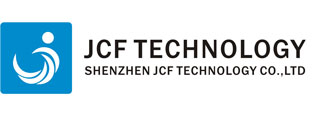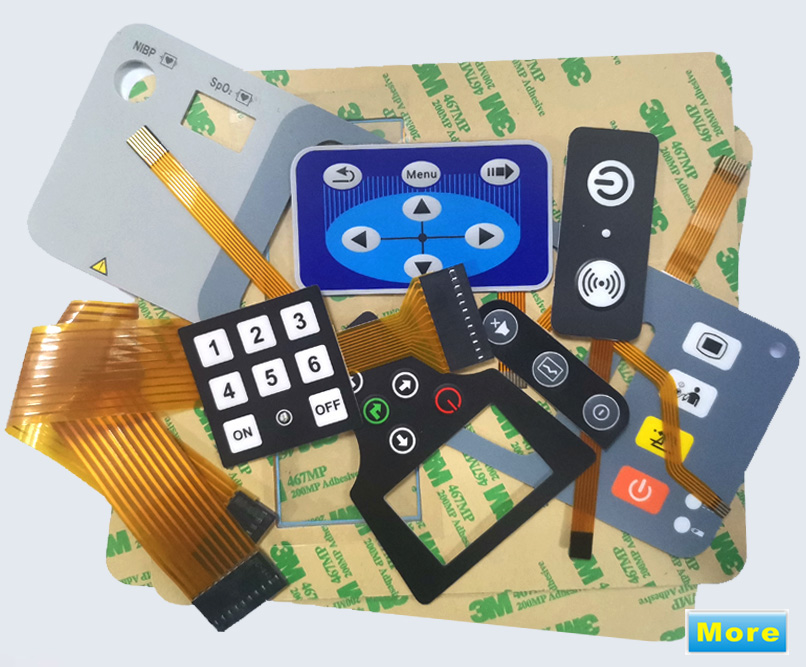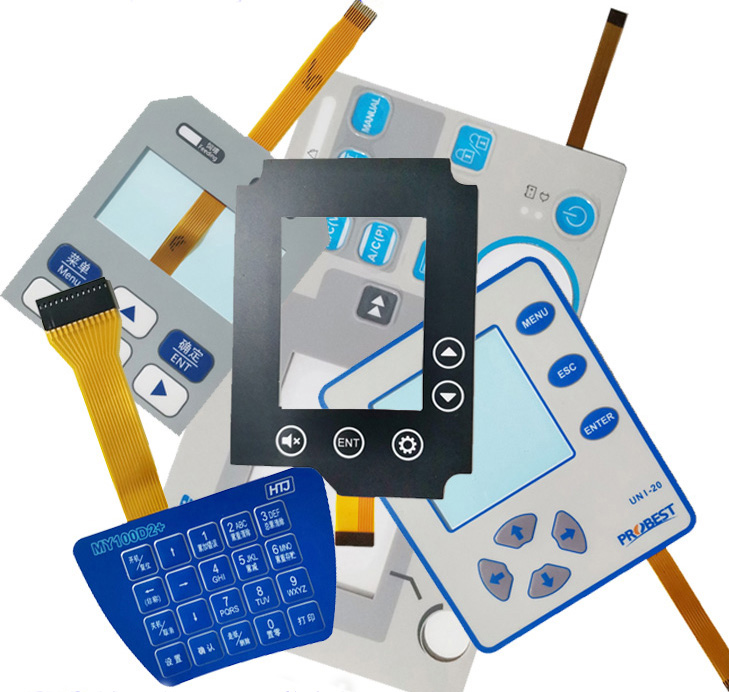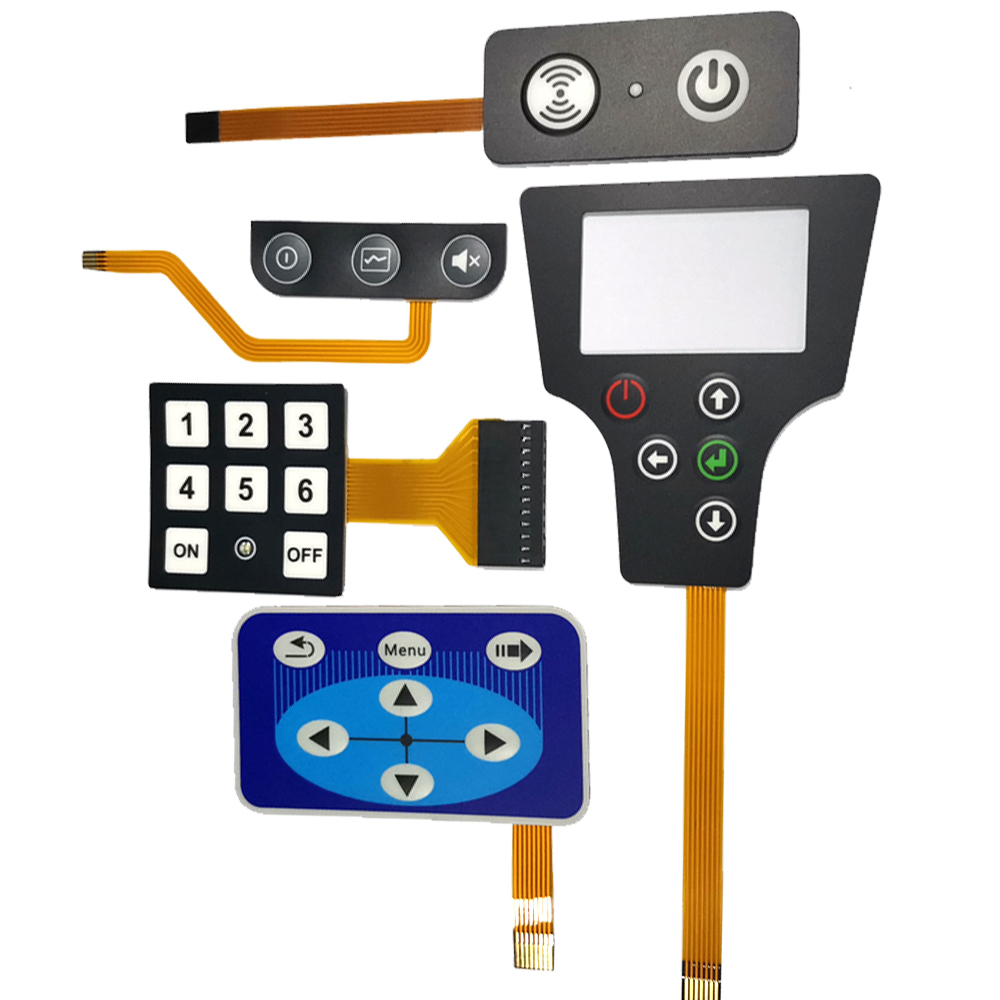
 Tel: +86755-27523807 +8613715205860(wechat/whatsapp)
Tel: +86755-27523807 +8613715205860(wechat/whatsapp) Email: jcf@jcftechnology.com
Email: jcf@jcftechnology.com

 Tel: +86755-27523807 +8613715205860(wechat/whatsapp)
Tel: +86755-27523807 +8613715205860(wechat/whatsapp) Email: jcf@jcftechnology.com
Email: jcf@jcftechnology.com

FPC membrane switch panels can be produced using polyester or polyimide (Kapton) as the base material,depending on your interface requirements. A very thin sheet of copper is laminated to the flexible film substrate\then chemically etched away, leaving copper traces. The etching process is not environmentally friendly due tothe chemicals used, and is also more expensive than screen printing the silver traces used in Silver Flex membrane switches.

FPC membrane switches can be constructed as:
Single-sided – conductive traces one side copper of the film substrate
Double-sided – conductive traces both sides copper of the film substrate
Rigid-Flex – a laminated combination of a Copper Flex switch with a rigid FR4 PCB membrane switch
Advantages of FPC Membrane Switches:
FPC membrane switches are ideal for smaller designs where dense circuit patterns or trace routing limitations\exist. This design also allows the ability to accommodate the complex circuit patterns of a FR4 rigid printed circuit board with the flexibility of a membrane switch. Copper Flex keypads also have the advantage of being able to hard solder active and passive components into the assembly, making it a good choice in high-vibration,high-reliability environments.
FPC Membrane Switch Design Options & Considerations:
Copper Flex Single-sided, double-sided designs available Lower electrical resistance and higher conductivity vs.traditional Silver Flex membrane switchesTight trace routing capabilitiesSame thin profile and flexibility as Silver.
Flex Membrane Switches Plating options can be tin-lead, nickel, or gold Tactile and non-tactile with either metal or polyester tactile domes Pillow or rim-embossed graphic overlays LEDs and other components can be soldered and are more robust Graphic overlays that can be digitally printed, screen printed, or a combination of both The graphic overlays can incorporate transparent and tinted display windows, as well as selective textures and UV hardcoat surface finishes.
Membrane switch Technical Datas:
1 Electrical Performance
(1) Operating Voltage: ≤50VD
(2) Operating Current: ≤100mA
(3) Contact Resistance: 0.5~10Ω
(4) Insulation Resistance: ≥100MΩ(100VDC)
(5) Base Material Withstand: 2kDVC
(6) Contact bounce: ≤6ms
(7) Loop Resistance: 50Ω,150Ω,350Ω or as per clients’ requirement
2 Mechanical Properties
(1) Life expectancy: >1 million times
(2) Switch stroke: 0.1-0.4mm(Flat type)0.4-1.0mm(Tactile type)
(3) Actuation force: 15~750g
(4) Flex Tail Pitch(Standard): 2.54 /2.50 /1.27/ 1.25mm
3 Environment Specification
(1) Operation Temperature: -20°C~+70°C
(2) Storage temperature: -40°C~+85°C
(3) Humidity: 40 C, 90%-95%, 240 hours
4 Printing Indicator
(1) Size Deviation: ±0.15mm
(2) Side Boundary: ≤0.1mm
Basic Properties:
|
Electrical Properties: |
|
|
Rated Voltage |
≤50V DC |
|
Rated Current |
≤ 100mA |
|
Operating Power |
≤1W |
|
Insulation Resistance |
≥100MΩ (250V DC) |
|
Loop Resistance |
10Ω~2kΩ (based on the design) |
|
Contact Resistance |
0.5 ~ 5Ω |
|
Wire Lead Resistance |
<1Ω/cm |
|
Base Material Voltage Withstand |
1500V DC |
|
Mechanical Properties: |
|
|
Life Expectancy |
Flat type ≥ 5 million times, Tactile type ≥ 1 million times |
|
Operation Force |
Flat Type 57-284g ,Tactile Type 170-397g |
|
Dome Rebound Time |
≤6ms |
|
Tail Bending Performance |
≤180° |
|
Switch Stroke |
Flat 0.1~0.5mm,Tactile 0.6~1.5mm |
|
Vibration |
20G's max. |
|
Thickness |
0.7~1.5 mm |
|
Environmental Properties: |
|
|
Operation Temperature |
-40°C to +80°C (-40°to 176°F) |
|
Storage Temperature |
-40°C to +85°C (-40°to 185°F) |
|
Atmospheric Pressure |
86 ~ 106 kPa |
|
Humidity |
+40°C, 90%~95%RH for 240 Hours |

Contact us:
Email:jcf@jcftechnology.com
Phone:+8613715205860(Wechat)